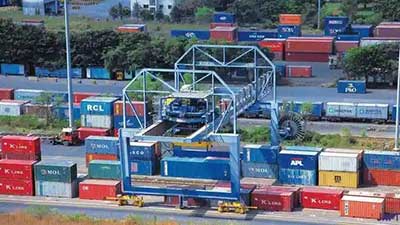Date: 13/01/2023
Relevance: GS-3: Economic Development and Growth; Trade and Investment; Infrastructure; Trade Policy.
Key Phrases: Inverted duty structures, Taxation, International Trade, Global Investment, Policy stability, Tariff and Non Tariff Barriers, Developing Nations and Advanced Economies, Multinational Companies and Manufacturing Sector.
Context:
- Although India has been trying to simplify taxation, various complexities have diluted some of the gains these efforts have brought.
- The persistence of inverted duty structures in some business sectors is making trouble for a business friendly environment that is needed to be corrected.
Key Highlights:
- India is rapidly emerging as a preferred country for foreign investments in the manufacturing sector.
- Our balance of trade was hit this fiscal year by a heavier oil import
bill than expected.
- In the second quarter of 2022-23, India’s current account deficit touched 4.4% of GDP, a nine-year high.
- India is a country of 1.4 billion people with a rising middle
class.
- On the face of it, the country presents untapped growth potential.
Inverted Duty Structure and their Impacts:
- When taxes on the final product is lower than the taxes charged on inputs, an inverse input tax credit gets accumulated that has to be refunded by the government in the majority of the cases.
- In domestic manufacturing, with levies imposed on the value added at
each stage of production-
- This could bloat a manufacturer’s tax burden long before sales realization; and in acute cases of rate inversion, capital blocked in a refund wait can be irritating.
- On the trade front, such anomalous rate structures reveal their worst
effects.
- Here, higher import tariffs on intermediate items than on finished goods are a deterrent to investment in local plants, especially if they must fit into global supply networks, which typically involve various bits and pieces made across borders and need particularly low tariffs on inputs for an eventual competitive edge in global markets.
Other concerns related to Trade and Manufacturing in India:
- Hefty tariffs, archaic labour laws, fragile policy frameworks and regulatory uncertainty compounded unfavourable growth conditions in an unfamiliar territory.
- Another concern is the acquisition of land with clear titles without
bribery and conflict.
- Very often, land and project approvals are in limbo for months.
- Retrospective taxation, rejections of foreign dispute settlements and a revenue-sharing muddle in telecom, for example, sent out awkward signals.
- India’s slow adoption of rapidly evolving technology and the lack of skilled labour and innovation are seen as hindrances.
- Global companies are re-allocating investment towards advanced and more profitable markets in comparison to emerging markets like India which are yet to catch up on sophisticated technology.
Steps by Government:
- In recent years, the government has cut taxes for new ventures, offered production-linked incentives for manufacturers, sought to slash red-tape and eased tax remission for exporters.
- Under the recently introduced production linked incentive (PLI) scheme, the government has committed to allocate Rs1.97 lakh crore to 13 sectors, including manufacturing of pharmaceuticals, mobile and electronic components, for five years.
Way Forward:
- Various stakeholder bodies had made recommendations to the government to correct the anomaly of inverted duty structure which resulted in input tax credit accumulation that blocked crucial working capital for businesses.
- As the broad aim must be to aid the global competitiveness of all
that is made in India, corrections should focus on lowering input
tariffs rather than raising final-product barriers.
- While the former reduces the cost base of a manufacturer, the latter provides protection from import competition, a policy tool that can bend a sector to orient itself inward rather than outward, as we saw in the days of our closed economy.
- As global-scale manufacturing today tends to span multiple borders, integration with supply chains will require not just minimal duties on all items that could serve as inputs, to keep costs low, but also the avowal that these won’t rise.
- As the scenario differs from one field to another, and various free-trade pacts have complicated rate gaps, broad-sweep lowering of duties suggests itself as the best way to minimize inversions.
- Dissonance over trade policy must be resolved soon, as time ticks away for India to grab its China-plus-one chances, attract global supply-chain diversifiers and pitch the country as a manufacturing hub.
- For our exports to thrive, we must impose no unnecessary burden on domestic units that blunts their edge in global markets.
- The budget for 2023-24 should not just revise tariffs, but also state
its changes explicitly.
- Tweaks should not be buried in a maze of official documents that require looking up other references. Instead, they should be easy to comprehend.
Conclusion:
- Policymakers keen to establish India as a factory for the world. But it is still a steep ambition, and achieving it will need well-rounded policy alignment.
Source: Live Mint
Mains Question:
What is the inverted duty structure? Discuss the related issues and also suggest measures to address these issues. (150 Words)






















